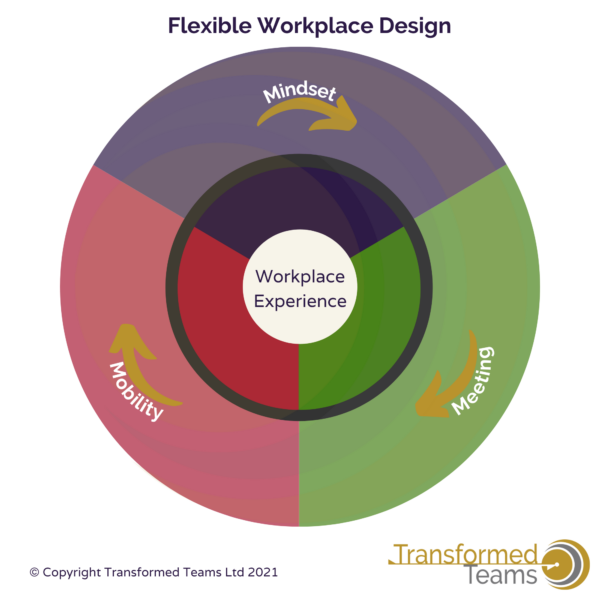A number of managers who work for you don’t like being required to manage remote teams. Managing remote workers goes against every fibre of their being. It feels like the opposite of everything they have been taught to do as a leader and manager.
If you continue to require your managers to adopt remote and flexible ways of working, many of them will look for the exit door. And in fact several high profile pieces of research have shown recently that record numbers of people are looking for the exit door – something the media is calling the ‘Great Resignation’. The reason is that they are not equipped for flexible ways of working, they are not ready for it and they don’t know how.
A few weeks ago I heard about a leader, a middle manager, who typified this mindset. He had been dealing with a number of requests to work from home, when he called a team meeting to discuss the situation. The discussion was a one-way conversation, which he summarised by email later: “Given we are a unique project having to deliver some big work over tight timelines, my preference is to have people in the office as much as possible.” He outlined the planned Work From Home schedule would be minimal.
Now if you are aware of the size of the demand for flexibility amongst employees, and their expectation that they will be supported to work flexibly, you can imagine how well this went down with this leader’s team. They were not pleased. In fact one of them was incredulous and went out of his way to tell me the story.
This situation demonstrates something I have seen since I first started working with workplace leaders creating flexible workplaces in 2011. The opportunity for flexibility is only as good as the organisation’s capability across a number of areas. At the simplest level these capabilities are in the areas of mindset, meeting and mobility.
From my experience, I could make a reasonable prediction that this leader hasn’t developed his mindset for flexible ways of working – he hasn’t got comfortable with managing remote workers. He is probably struggling to manage according to outcomes and finds himself relying on more subjective indications of commitment. It is also likely he has not developed his capacity to make the most of online communication opportunities that would help his team meet and communicate in various ways to connect, collaborate and share information. At the end of the day, he is not comfortable managing his team while they’re working remotely.

The most common mistake workplace leaders make when they try to establish flexible ways of working is that they fail to address all parts of the workplace experience. Their focus tends to settle on hard infrastructure to create mobility, leaving two critical capabilities in the dust: 1) the right mindset for flexible ways of working, and 2) the right meeting behaviours, which encompasses communication.
You might say isn’t technology the most critical capability required for flexible ways of working? Of course, technology is a critical function for flexibility. And workspace design is critical as well – people can’t change their ways of working without these critical enablers. An executive team member once asked me this same question, in a meeting with her executive peers. She asked me to confirm that technology was the most important of all the enablers. I couldn’t do that, because that is simply not the case. Technology is important, but only as an enabler of one key capability. Nonetheless the ‘hard stuff’ that enables mobility is where people get stuck in their thinking, this is the point where their curiosity about how to create flexible ways of working tends to stop.
Some workplace leaders won’t realise just how much work there is to do on their other two capabilities: meeting and mindset, because they do not have a clear understanding of the current workplace experience. Slack and McKinsey are two prominent voices decrying the disconnection between what executive workplace leaders think their employees are experiencing in the workplace and their actual experience.
I hear one further objection to the view that technology and workspace design alone is enough to create flexible ways of working. That view is that changing mindset and meeting capabilities are easy, which can be done by the change managers. I will need another blog post to refute that futile view.
So what can you do if you have managers who are deeply uncomfortable with managing remote teams?
- Get to grips with your managers’ and other employees’ current workplace experience – how well are they feeling supported to manage or to work flexibly?
- Review the learning and development opportunities you have given your managers, to help them develop the mindset and skills that will enable them to manage remote teams successfully.
- Consider an experiential learning opportunity, where managers have the opportunity to actively trial and adapt their skills over a period of a couple of months, with access to support. We incorporate this experiential learning into our Emergent change approach.
We have discovered that it is entirely possible to implement flexible ways of working successfully in your organisation, even if a portion of your managers are reluctant at this point.
Business & Finance Articles on Business 2 Community
(28)






